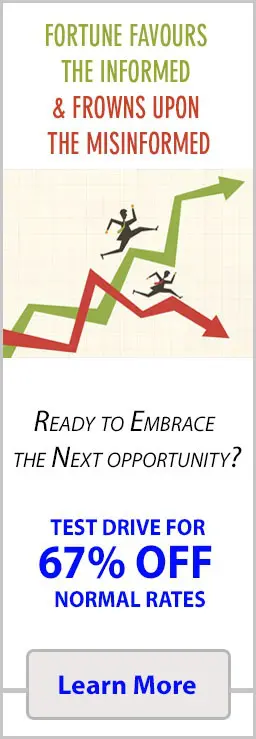Analysing the Current Dogs of the Dow: Dividend Opportunities and Market Outlook
Apr 30, 2025
Beware the stampede: in the electric theatre of modern markets, the greatest threat to your wealth is not a crash, not inflation, nor even the next geopolitical shock. It is the primal panic of the crowd, the split-second surrender to fear that turns seasoned investors into a reckless herd, trampling over logic, opportunity, and their own futures. When the market howls and the headlines shriek, most flee—selling at the worst possible moment, locking in losses, and cursing their luck. But a precious few, the true contrarians, step into the storm. They know: in the shadow of collective terror, the seeds of fortune are sown. Nowhere is this more apparent than in the annual drama of the current Dogs of the Dow—a list as much a psychological litmus test as an investment screen. To master it is to master not just stocks, but yourself.
Panic and the Pack: Herd Mentality Meets the Dogs of the Dow
The Dogs of the Dow strategy is, on its surface, elegantly simple: each year, you select the ten highest-yielding blue-chip stocks from the Dow Jones Industrial Average, betting that their battered prices and hefty dividends will produce above-average returns. Yet beneath this simplicity lies a battlefield of human psychology. Why do these “dogs” exist in the first place? Because the market, in its infinite wisdom—or folly—has collectively marked them as outcasts, selling them down on fears of declining growth, sector malaise, or the whiff of scandal. Each year’s list is a testament to mass aversion: in 2024, as in decades past, the likes of Verizon, Walgreens Boots Alliance, and Intel found themselves abandoned, their yields swelling as prices tumbled on waves of negative sentiment.
History offers brutal lessons. Consider October 1929. The Wall Street Crash was not just a financial event, but a psychological contagion, spread not by facts but by fear. Investors, sensing trouble, dumped stocks en masse, triggering a cascade that wiped out fortunes and confidence alike. Fast-forward to 2008: the collapse of Lehman Brothers ignited another stampede, as even blue-chip stalwarts were thrown onto the pyre. In 2020, the COVID-19 panic saw the market plummet with a speed unmatched in history, the sell-off fuelled more by uncertainty than by any rational assessment of value. Each time, the crowd’s instinct was the same: sell first, ask questions later.
What drives this madness? Cognitive biases—such as loss aversion, confirmation bias, and social proof—combine with the 24-hour news cycle and social media echo chambers to amplify every tremor, transforming uncertainty into an apocalypse. The Dogs of the Dow, each bearing the scars of recent panic, are living proof of how rapidly fear can turn quality businesses into market pariahs.
Dividends in the Inferno: Turning Panic into Opportunity
Yet within this chaos lies the contrarian’s edge. The Dogs of the Dow are not a random collection of fallen angels; they are blue-chip companies with battered reputations, generous dividends, and, often, resilient business models. When the herd panics, yields soar—not because the companies are doomed, but because the crowd’s flight drives prices irrationally low. This is the moment of opportunity.
Take IBM in the early 2010s. Written off as a relic, it offered a fat dividend as the market scorned its transition. Yet, those who bought during the pessimism enjoyed years of strong yields and robust returns. Or look to Chevron in 2020: as oil prices collapsed and climate panic peaked, the stock was crushed. Contrarians who stepped in not only locked in high yields but also captured outsized capital gains as sentiment recovered.
What separates the winners from the wrecked? Discipline, vision, and a refusal to mistake the crowd’s fear for reality. Warren Buffett, for all his folksy charm, is ruthless in exploiting mass panic. “Be fearful when others are greedy, and greedy when others are fearful,” he intones—advice easier given than followed. The real contrarian is not simply a cynic or a gambler; he is a student of psychology, a master of emotional control, and a patient collector of dividends when others are paralysed by dread.
Strategic Ingenuity: Harnessing Fear with Options and LEAPS
But there is more to be mined from panic than simple stock-picking. When volatility surges, as it often does around the Dogs of the Dow, option premiums inflate—sometimes absurdly so. This is where advanced contrarians deploy a sharper edge: selling put options on these out-of-favour giants. In essence, you are paid handsomely to agree to buy quality companies at even lower prices, should the market’s fear prove justified. If the puts expire worthless, you pocket the premium as pure profit. If assigned, you acquire blue-chip stocks at a net price even more absurdly discounted, with locking in juicy dividends for years to come.
Consider Walgreens Boots Alliance in early 2024. As negative headlines swirled and the crowd fled, implied volatility on its options soared. A disciplined investor could sell cash-secured puts at a strike well below the prevailing price, collecting substantial premiums. Suppose you collect $2 per share on a $20 strike put—if the stock stays above $20, you keep the cash. If it falls, you buy a 5% yielder at a net cost of $18, boosting your yield and margin of safety.
The real alchemy comes when reinvesting these premiums into LEAPS—long-dated call options on the same battered names. With the crowd pricing in perpetual misery, LEAPS can offer transformative upside for a modest outlay. The synergy is powerful: you’re paid to wait, paid to buy, and retain optionality for explosive gains if sentiment turns. This is not blind speculation, but calculated risk-taking—using the market’s own fear to build a long-term portfolio of blue-chip compounders.
The Virtue of Restraint: Discipline and Risk in Contrarian Investing
Of course, contrarianism without discipline is mere bravado. Many have been ruined by confusing boldness with recklessness—doubling down on dying companies, ignoring balance sheets, or misjudging the duration of negative sentiment. The Dogs of the Dow, for all their pedigree, are not immune to secular decline. A falling knife can always fall further; an out-of-favour stock can become a permanent loser. Emotional control is paramount. Set strict position sizes, demand robust dividend cover, and never risk more capital than you can afford to lose. Use technical analysis, watch for signs of capitulation, and, above all, remain intellectually honest. The crowd may be irrational, but the market is not always wrong.
During the 2008 crisis, for every investor who bought Wells Fargo or Johnson & Johnson at the depths, there were others who chased the likes of Lehman or General Motors into oblivion. The difference? A relentless focus on quality, cash flow, and long-term viability. Contrarian investing is not about being contrary for its own sake, but about knowing when the crowd has overshot, and when genuine risk remains. Learn to distinguish between cyclical pain and existential threat. Filter the Dogs with care, demand evidence of resilience, and remember: the market can remain irrational longer than you can remain solvent.
Vision Beyond the Herd: Empowerment and the Road Ahead
In the end, analysing the current Dogs of the Dow is not just a matter of screening for high yields or betting on mean reversion. It is a test of will, of independent thinking, of the courage to see opportunity where others see disaster. The crowd will always panic; the headlines will always shout. True investors—those who blend insight with discipline, who turn fear into advantage—are destined to thrive while the herd is left nursing its wounds.
Today’s Dogs—Verizon, Walgreens, 3M, Dow, Intel, and their kin—are not mere tickers. They are case studies in mass psychology, living reminders that markets are made not by numbers alone, but by human nature in all its flawed glory. To succeed, you must see through the fog of collective emotion and act with clarity, patience, and purpose.
Break free from the tyranny of the crowd. Let others panic while you prepare. Deploy capital when others hoard cash. Collect dividends while others bemoan paper losses. Harness fear not as a foe, but as a forge for your own financial autonomy. The path to wealth is clear: learn from history, master your mind, and invest with courage when the world trembles.
Timeless Wisdom: Articles for the Modern Thinker











